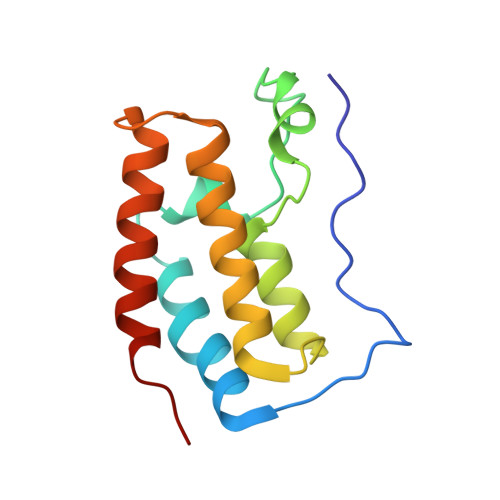1,4-Dihydropyridinebutyrolactone-derived ring-opened ester and amide analogs targeting BET bromodomains.
Jiang, J., Zhao, P.L., Sigua, L.H., Chan, A., Schonbrunn, E., Qi, J., Georg, G.I.(2022) Arch Pharm (Weinheim) 355: e2200288-e2200288
- PubMed: 35941525
- DOI: https://doi.org/10.1002/ardp.202200288
- Primary Citation of Related Structures:
7UTY, 7UUU - PubMed Abstract:
Based on a previously reported 1,4-dihydropyridinebutyrolactone virtual screening hit, nine lactone ring-opened ester and seven amide analogs were prepared. The analogs were designed to provide interactions with residues at the entrance of the ZA loop of the testis-specific bromodomain (ZA) channel to enhance the affinity and selectivity for the bromodomain and extra-terminal (BET) subfamily of bromodomains. Compound testing by AlphaScreen showed that neither the affinity nor the selectivity of the ester and lactam analogs was improved for BRD4-1 and the first bromodomain of the testis-specific bromodomain (BRDT-1). The esters retained affinity comparable to the parent compound, whereas the affinity for the amide analogs was reduced 10-fold. A representative benzyl ester analog was found to retain high selectivity for BET bromodomains as shown by a BROMOscan. X-ray analysis of the allyl ester analog in complex with BRD4-1 and BRDT-1 revealed that the ester side chain is located next to the ZA loop and solvent exposed.
- Department of Medicinal Chemistry and Institute for Therapeutics Discovery and Development, College of Pharmacy, University of Minnesota, Minneapolis, Minnesota, USA.
Organizational Affiliation:


















